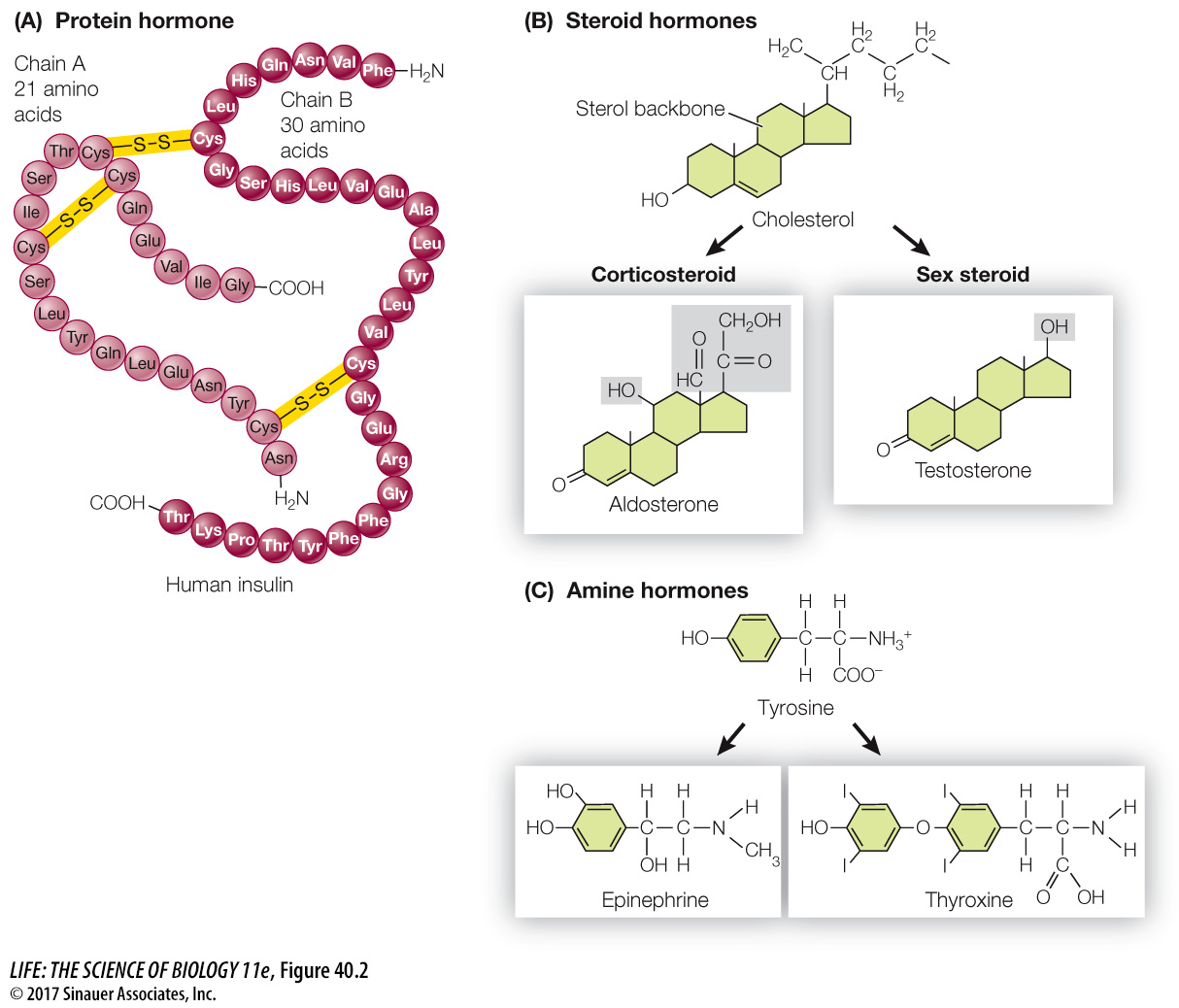Hormones are divided into three chemical groups
There is enormous diversity in the chemical structure of hormones, but by and large they can be classified into three groups:
Peptide and protein hormones make up the majority of hormones. A peptide consists of 2 or more amino acids, and a protein is defined as having 50 or more amino acids. Insulin is therefore a small protein hormone (Figure 40.2A). Peptide and protein hormones are water-
soluble and thus easily transported in the blood. They can be packaged in vesicles within the cells that make them, and then released by exocytosis. Steroid hormones (such as estrogen and testosterone) are synthesized from cholesterol (Figure 40.2B), are lipid-
soluble, and pass easily through cell membranes. Steroid hormones diffuse out of the cells that make them and are usually bound to carrier molecules in the blood. Amine hormones are mostly synthesized from the amino acid tyrosine (thyroxine is one example; Figure 40.2C). Some amine hormones are water-
soluble and others are lipid- soluble; their modes of release differ accordingly.
